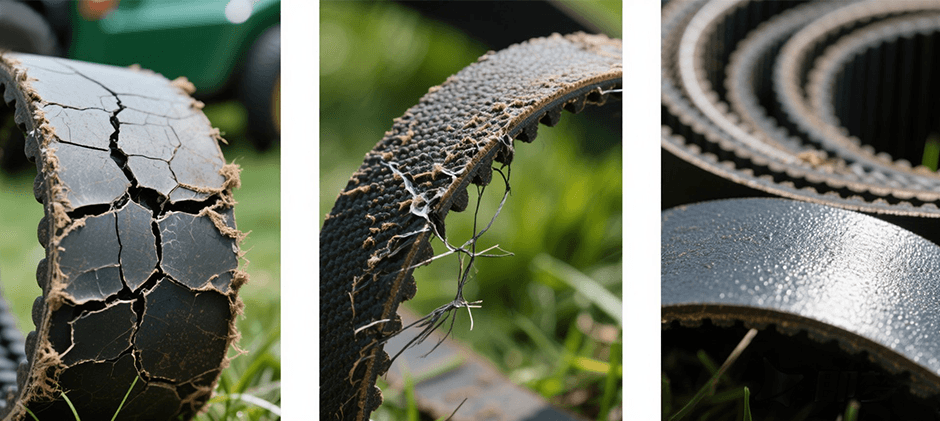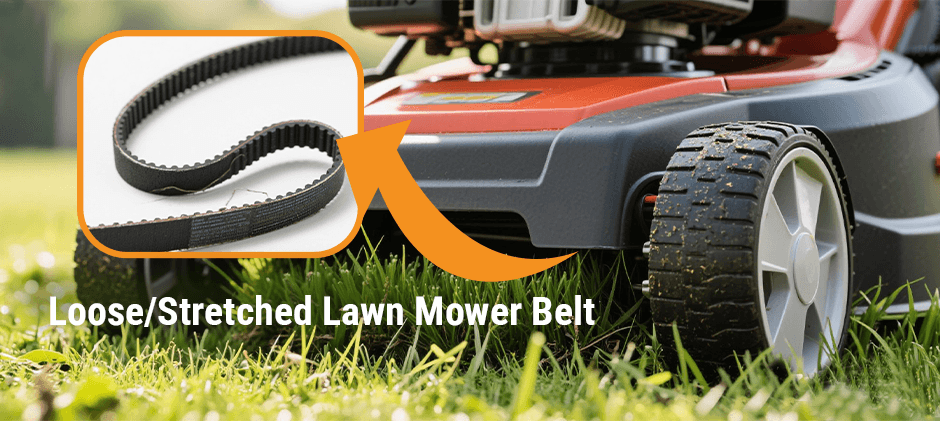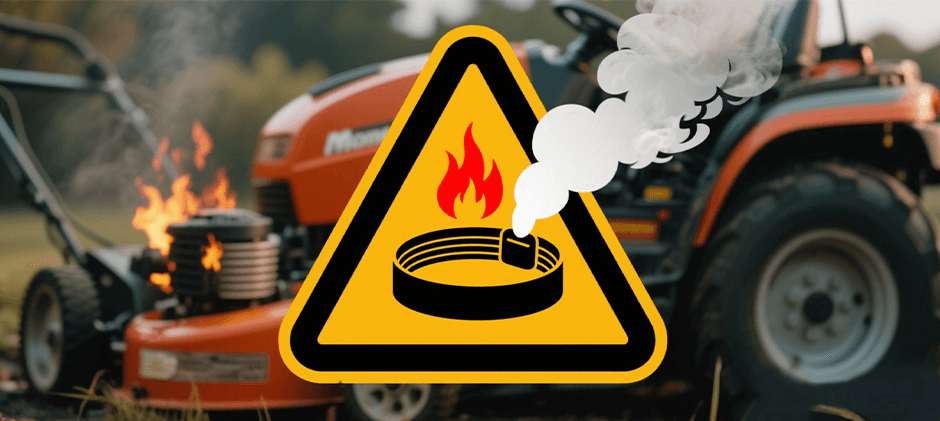Do you think that your lawn mower blade is driven directly by a PTO shaft or by an engine crankshaft? Actually, your lawn mower belt is the key component that keeps your blade working—the belt is powered by the electric clutch and the engine, and it turns the pulleys. As an important mower part made of rubber, polyester cord, or Kevlar cord, wear and tear are meant to happen over time. But how do you know exactly, the replacement of your mower belt is a necessity?
Without a healthy and strong belt, your mower’s blades won’t be able to spin. To minimize the downtime, it is recommended that you know the early warning signs that indicate your belt is bad. In this guide, I will help you recognize 7 clear indicators that your mower belt needs attention, helping you maintain your lawn equipment like a pro.
What Does a Lawn Mower Belt Do?
I believe having a deeper understanding of the mower parts will help you DIY better. As I said at the beginning of this article, in riding mowers and many walk-behind models, belts connect various pulleys, driving the mower deck (to spin the blades) and/or the transmission (to move the wheels). There are typically two main types: the deck belt (or PTO belt) and the drive belt.
Signs of a Bad Lawn Mower Belt
In general, there are 7 signs to claim a bad lawn mower belt, including visual damage, unusual noise, looseness, or stretching, wrong blade movement, burning smell, uneven cutting, and sudden mower snapping. You gotta use your eyes, hearing, and nose to judge how bad the situation is. Here are some troubleshooting steps:

1. Visible Damage: Cracks, Fraying, and Glazing
A quick visual check can often reveal a lot about the health of your lawn mower belt. The most straightforward way to tell if your lawn mower belt is failing is through visual inspection.
- Cracks: Look closely at the belt’s surface. Small, hairline cracks can develop over time, especially on the ribbed or V-shaped side. As these cracks deepen and multiply, they weaken the belt’s structure, making it prone to breaking.
- Fraying: The edges of the belt should be clean and smooth. If you see fabric strands coming loose, or “fraying,” it’s a clear sign of wear. Fraying indicates the belt is rubbing against something, or its internal construction is breaking down.
- Glazing: A shiny, polished, or hardened appearance on the belt’s sidewalls (the sides that contact the pulley grooves) is called glazing. This happens when the belt slips excessively, generating heat that melts and smooths the rubber. A glazed belt loses its grip, leading to inefficient power transfer.
2. Squealing, Chirping, or Grinding Noises
Unusual sounds coming from your mower are often the first auditory clue that something is wrong.
- Squealing/Chirping: A high-pitched squeal or chirping sound, especially when engaging the blades or starting to move, is a classic sign of a slipping mower belt. This friction noise occurs when the belt isn’t gripping the pulleys tightly enough. It can be due to stretching, glazing, or improper tension.
- Grinding/Rumbling: While less common for the belt itself, a grinding or rumbling sound could indicate that a worn belt is causing excessive strain on the pulleys or bearings, leading to internal damage within those components. Always investigate any new or persistent noises.

3. Excessive Looseness or Stretching
A lawn mower belt needs to be snug to function correctly. Over time, belts can stretch, leading to looseness.
- Visual Sagging: When inspecting your mower, check the tension of the belts. If a belt looks visibly saggy between pulleys, or if you can easily twist it more than a quarter turn, it’s likely too loose.
- Reduced Tension: A loose belt won’t transfer power efficiently. This can manifest as sluggish blade engagement or a lack of drive power. While some belts have adjustable tensioners, excessive stretching means the belt has lost its elasticity and needs replacement.
4. Difficulty Engaging Blades or Mower Movement
When your mower’s performance starts to decline, a failing belt is a prime suspect.
- Blades Not Spinning: If you engage the PTO (Power Take-Off) but the mower blades don’t spin, or spin very slowly and weakly, a worn or broken deck belt is almost certainly the cause.
- Mower Won’t Move: For riding mowers, if the engine runs but the mower doesn’t move forward or backward, or moves very slowly, the drive belt is likely faulty or broken.

5. Burning Rubber Smell
A distinctive smell of burning rubber is a strong indicator of a problem, often related to excessive friction.
- Overheating Belt: When a mower belt slips continuously due to wear, looseness, or pulley misalignment, it generates a lot of heat. This heat can cause the rubber to burn, producing a telltale odor.
- Severe Slippage: A burning smell suggests severe slippage, which can not only damage the belt further but also potentially harm the pulleys or engine. Address this issue immediately.
6. Uneven Cutting or Poor Performance
Even if the blades are spinning, a failing deck belt can affect the quality of your cut.
- Inconsistent Blade Speed: A stretched or slipping deck belt may not maintain consistent blade speed, especially in thicker grass. This leads to an uneven cut, leaving some areas of grass taller than others.
- Lack of Power to Blades: You might notice the blades bogging down more easily than usual, even in moderately thick grass. This indicates that the belt isn’t transferring enough power from the engine to maintain blade momentum.
7. Sudden Snapping or Complete Failure
While not a warning sign before it happens, a sudden break is the ultimate indicator that your lawn mower belt is bad.
- Immediate Stop: If your mower suddenly stops cutting or stops moving entirely with the engine still running, a belt has likely snapped.
- Visible Break: Upon inspection, you’ll find a completely broken belt, often in two or more pieces. This is usually the result of long-term wear, extreme stress, or impact damage.
Where Can I Find Quality Lawn Mower Belts?
Don’t let a worn-out lawn mower belt spoil your mowing day! At FridayParts, we offer a vast inventory of high-quality mower parts, including mower belts designed for wide compatibility with many heavy equipment brands. Our products provide excellent performance and durability at affordable prices. When it’s time to replace your mower belt, trust Fridayparts for the parts you need to get back to work. Any interests? Check out our durable mower belts for your lawn.
